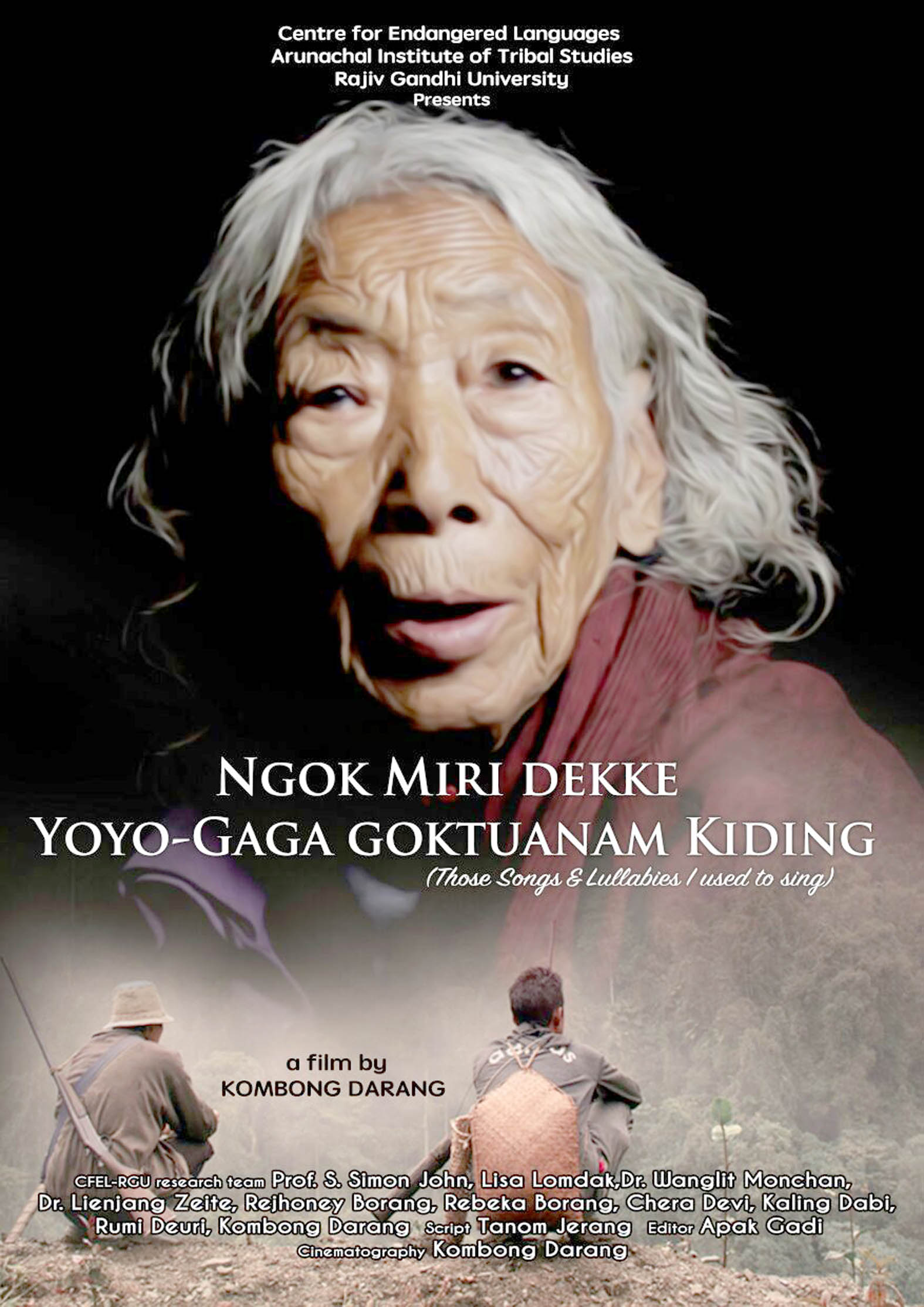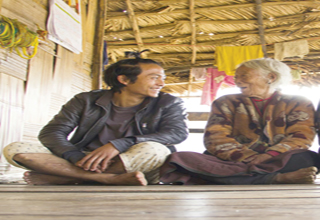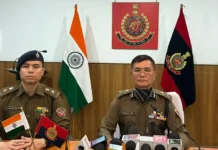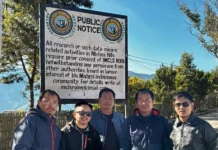[ Tongam Rina ]
RONO HILLS, Mar 26: Those Songs and Lullabies I Used to Sing (Ngok Miri dekke Yoyo- Gaga gokktuanam kidding) is a 45-minute film that passionately documents the Tangam (Adi) language and the last remaining speakers of the language who reside in Kuging village of Upper Siang district and their rituals.
Directed by Kombong Darang, a Phd scholar in the Department of Mass Communication, who is also the Documentation Officer of the Centre for Endangered Languages (CFEL), Arunachal Institute of Tribal Studies, Rajiv Gandhi University, the producer, the film is a heartbreaking reminder of perishing languages and rituals of Arunachal.
As you watch the film, many questions follow; what are we doing to save our native languages as the state faces the onslaught of Hindi, a language of integration with India, and English that takes us places.
The film also documents the rituals which inevitably lead us to gory slaughter of animals as well as the use of the bamboo and leaves, the organic tribal way of life, prayers to the spirits of the forests, fire and the food grain.
The young filmmaker says that he heard about the Tangams in 2014, from a friend, Oyi Apang, who was posted as a teacher in Kuging village.
“One evening I went to her place when she told about the place and people of Kuging. She said they are Adis but speak a language variety that she did not even understand. Since then I started the concept about making a film on Tangams. As luck would have it, I got selected as a documentation officer and CFEL had chosen Tangam language as its area of research”, Kombong says.
The filming was another eye opener for him.
“When we were there at Kuging, we were looking for people who had knowledge about the origin of the Tangams or who could sing folksongs. There was just one, Joming Daji, who is over 90 years and who knew the oral history. No one else knew! She too had forgotten many things in due course of time”, he said.
Kombong, who, as part of the CFEL has been documenting many lesser known communities across the state, says that it was a sad realization for him that many tribes in the state are on the verge of losing the oral tradition with lesser people speaking native languages.
“I realize the status of languages and the level of endangerment the languages face in the state, he says”.
The narration as well as the title of the film is in Adi Minyiong, the language spoken by the filmmaker, perhaps a first in the state where a native language has been used, with subtitles in English ensuring a wider reach.
“I really do hope that effort will be put in to save the Tangam Language” he says.
“What works beautifully for me is that most parts of the film are in the Tangam language, which itself is the protagonist of the film in a sense. And that the filmmaker chose to do the narration in a related language- Adi Minyiong -is a strong statement on the struggle for languages to survive, and their resilience. The message that it has and the point about need for language protection needs to be seen and heard across our state”, says cultural activist and filmmaker Moji Riba.
“The film is important because it showcases the reality of perishing languages and there are lessons to be learnt”, says Director of the AITS, Prof Simon John.
The end, with the lady singing the lines that also form the title of the film, is both poignant and challenging at the same time…as it leaves us with a sense of not just loss, but more importantly, a desire to do something to stop the loss of languages that we see all around us today.
According to a field survey carried out by the Centre for Endangered Languages in 2016, there are 253 Tangam speakers left in Arunachal.






